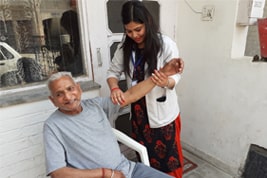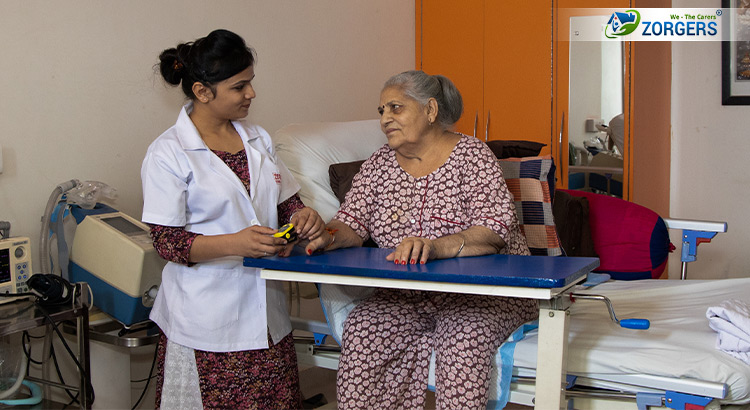As we gracefully age, maintaining independence and preserving mobility become essential components of our well-being. However, the risk of falls in elders presents a significant challenge, demanding a delicate balance between fostering autonomy and ensuring safety. In this blog, we’ll delve into the multifaceted aspects of falls in elders, exploring causes, preventive measures, and the crucial role of caregiver support.
Understanding the Complexity of Falls: Falls are not mere accidents; they often signal underlying health issues. Factors such as muscle weakness, balance disorders, medication side effects, and environmental hazards contribute to the complexity of falls in the elderly.
The Impact on Physical and Mental Health: Beyond physical injuries, falls can have profound effects on mental well-being, causing anxiety, fear, and a loss of confidence. Addressing both the physical and emotional aftermath is integral to a comprehensive falls prevention strategy.
Identifying Risk Factors: Recognizing the specific risk factors associated with each individual is key to developing targeted prevention plans. From assessing medical conditions to evaluating home environments, a personalized approach helps mitigate potential risks.
Promoting Exercise and Strength Training: Engaging in regular exercise, particularly strength training, proves to be a powerful preventive measure. Activities that enhance balance, flexibility, and muscle strength contribute to overall fall resilience.
Environmental Modifications: Creating a safe living space involves identifying and rectifying potential hazards. Simple modifications like installing handrails, improving lighting, and reducing clutter can significantly reduce the risk of falls.
Medication Management: Many medications have side effects that can contribute to dizziness or impaired balance. Regular medication reviews with healthcare professionals ensure that prescriptions align with the individual’s overall health and well-being.
The Vital Role of Caregivers: Caregivers play a crucial role in falls prevention. Offering assistance when needed, providing emotional support, and actively participating in the development and implementation of preventive measures contribute to a holistic care approach.
Technological Innovations: Embracing technology aids in falls prevention. From wearable devices that detect abnormal movements to smart home systems that enhance safety, these innovations add an extra layer of protection.
Encouraging Open Communication: Fostering an environment where elders feel comfortable expressing their concerns about falls enables proactive intervention. Open communication allows for collaborative falls prevention strategies tailored to individual needs.
Zorgers Falls Prevention Program: At Zorgers, our Falls Prevention Program is crafted with a holistic approach, integrating personalized care plans, caregiver support, and innovative strategies to create a safe and empowering environment for elders. We recognize the importance of balancing independence with safety, ensuring that each individual’s unique needs are met.
In conclusion, falls in elders necessitate a comprehensive and individualized approach. By addressing physical, environmental, and emotional factors, and with the support of caregivers and innovative solutions, we can navigate the challenges of falls while upholding the dignity and autonomy of our elder population.







